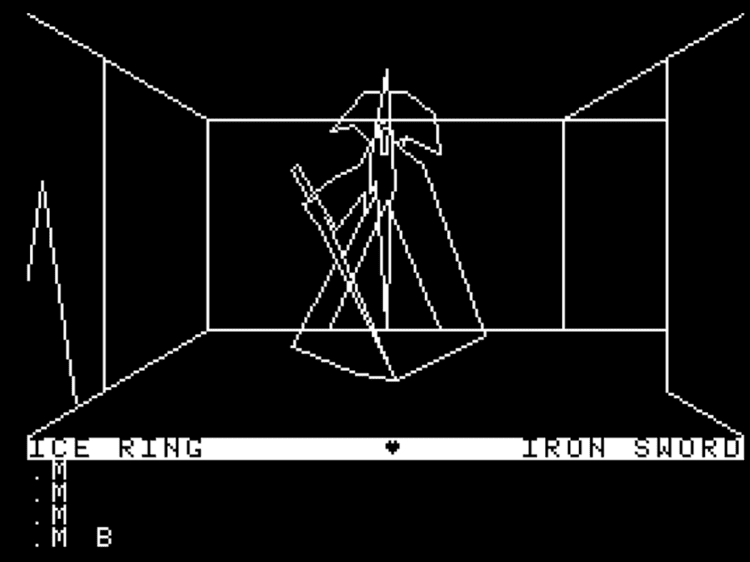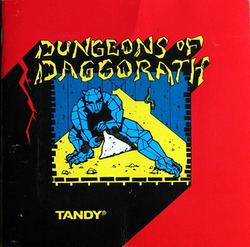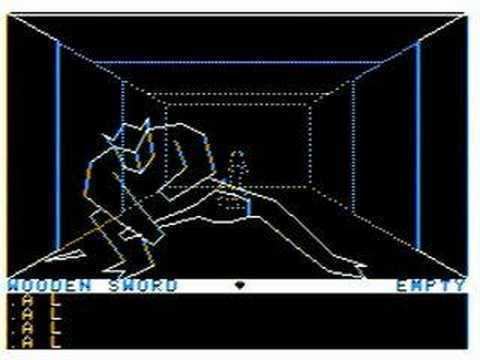8.4 /10 1 Votes8.4
Designer(s) Douglas J. Morgan Release date(s) 1982 Developer DynaMicro | 4.2/5 Google Play Engine Custom Initial release date 1982 | |||||||||||||||||||||||||||||||||
 | ||||||||||||||||||||||||||||||||||
Similar Tandy Corporation games, Role-playing video games | ||||||||||||||||||||||||||||||||||
Dungeons of daggorath 1st level
Dungeons of Daggorath is one of the first real-time, first-person perspective role-playing video games. It was produced by DynaMicro for the Tandy (RadioShack) TRS-80 Color Computer in 1982.
Contents
- Dungeons of daggorath 1st level
- The best retro game of its time dungeons of daggorath
- Gameplay
- History
- Sequel
- Reception and impact
- References

The best retro game of its time dungeons of daggorath
Gameplay

Dungeons of Daggorath was one of the first games that attempted to portray three-dimensional space in a real-time environment, using angled lines to give the illusion of depth. It followed the 1974 games Maze War and Spasim, written for research computers, and the first 3D maze game for home computers, 3D Monster Maze, released in 1981. The game Phantom Slayer, which like Daggorath was released in 1982 for the Color Computer, also featured monsters lurking in a maze. While Daggorath was visually similar to these games, it added several elements of strategy, such as different kinds of monsters, complex mazes, different levels of visibility, and the use of different objects and weapons.

The player moves around a dungeon, issuing commands by means of typing — for example, typing "GET LEFT SHIELD" or "USE RIGHT TORCH" (or abbreviations such as "G L SH" and "U R T"), gathering strength and ever more powerful weapons as the game progresses. Various creatures appear, and can often be heard when they are nearby, even when not visible. The object of the game is to defeat the second of two wizards, who is on the fifth and last level of the dungeon.
A unique feature of the game is a heartbeat which rises as the player moves and takes actions within the virtual environment. The heartbeat is a direct predecessor of the "health" indicator in later games; the higher the heart rate, the more vulnerable the player is to attack. The player can faint from overexertion, in which case there is the risk of being attacked while defenseless. This heartbeat system was used instead of numerical statistics such as hit points or vitality, and was inspired by arcade games, specifically 1978's Space Invaders where a heartbeat-like sound gradually increases pace as enemies advance towards the player.
History
The game was developed by Douglas J. Morgan and Keith S. Kiyohara, with sounds by Phil Landmeier, in 1980-81 for the Tandy (RadioShack) TRS-80 Color Computer. Produced by DynaMicro, it was released in 1982 as an eight kilobyte ROMpak cartridge for the Color Computer, which took several months of recoding to achieve. Despite this, the game features a multi-level maze and has what for the time were advanced sound effects that provide important clues to the locations of monsters.
Around 2001 Douglas J. Morgan noticed that the exclusive copyright has fallen back to him from as for years there was no production and selling by the publisher Radio Shack. He released than the game under a freeware like license to the public, also offering the source code for a small fee. Due to the source code availability it has been ported by the fan community to recent platforms as PC/Windows, Linux, RISC OS and PSP via the SDL library.
Sequel
After Dungeons of Daggorath became one of the most popular Color Computer games, Tandy produced a sequel, Castle of Tharoggad, which was made without the participation of the Daggorath team. It did not sell well, and received poor reviews from fans of the original.
Reception and impact
Dungeons of Daggorath was featured in the book Ready Player One, where the protagonist has to solve the game, emulated within a simulated universe. The game's artwork was used also for the Oneohtrix Point Never album Garden of Delete, which is an edit from a screenshot of the game. Despite what are now outdated graphics and sound, the game still enjoys a cult following in the retrogaming community for its challenging and engaging gameplay.
